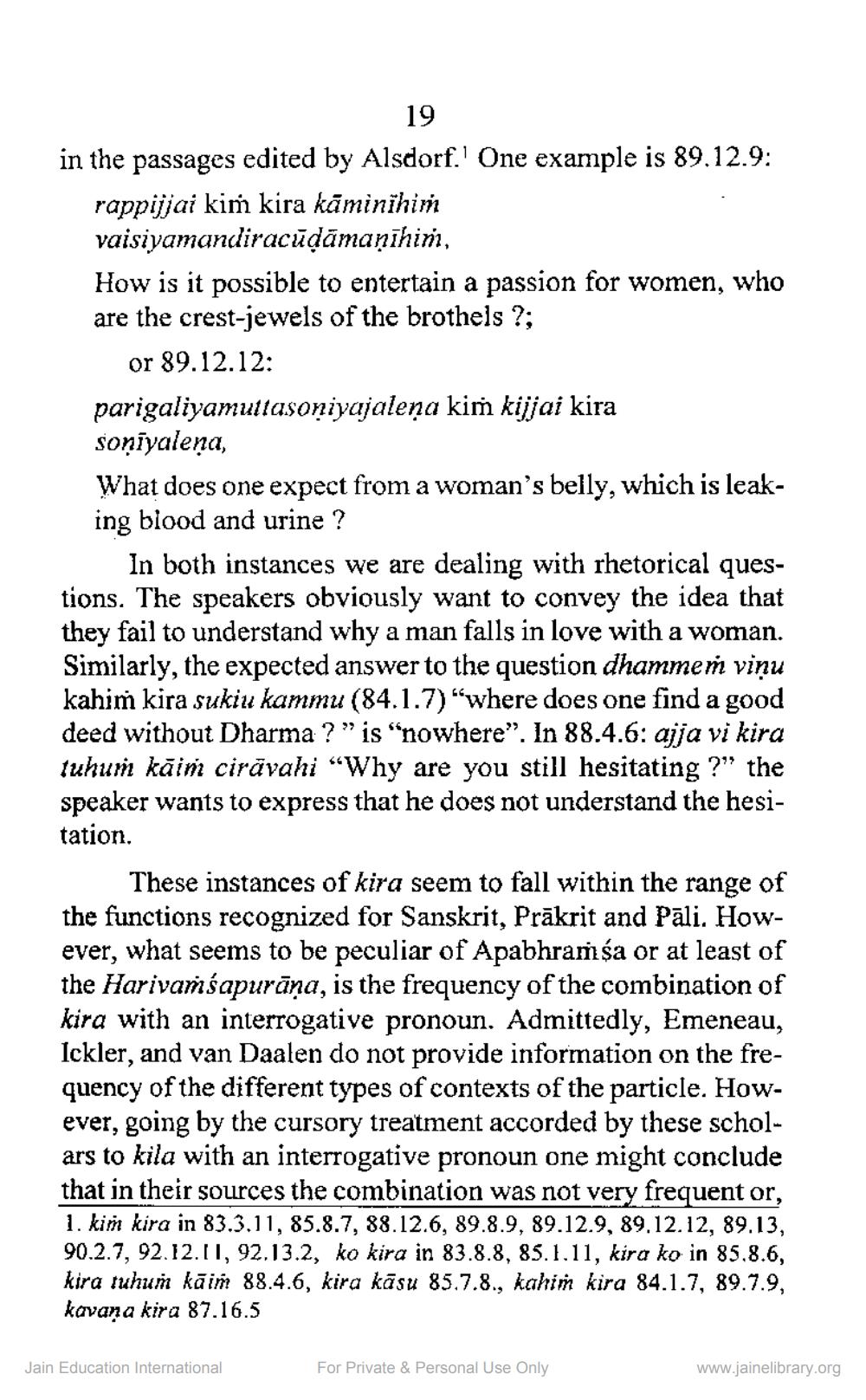Book Title: Two Peculiar Usages of Particle Kira Kiri in Apbhramsa Author(s): Hermen Tieken Publisher: ZZ_Anusandhan View full book textPage 2
________________ 19 in the passages edited by Alsdorf.' One example is 89.12.9: rappijjai kiṁ kira kāminihim vaisiyamandiracūdāmaņīhiń, How is it possible to entertain a passion for women, who are the crest-jewels of the brothels ?; or 89.12.12: parigaliyamullasoniyajaleņa kim kijjai kira soņiyalena, What does one expect from a woman's belly, which is leaking biood and urine ? In both instances we are dealing with rhetorical questions. The speakers obviously want to convey the idea that they fail to understand why a man falls in love with a woman. Similarly, the expected answer to the question dhammeň viņu kahim kira sukiu kammu (84.1.7) "where does one find a good deed without Dharma?” is nowhere". In 88.4.6: ajja vi kira tuhum kāin cirāvahi "Why are you still hesitating ?" the speaker wants to express that he does not understand the hesitation, These instances of kira seem to fall within the range of the functions recognized for Sanskrit, Prākrit and Pāli. However, what seems to be peculiar of Apabhramsa or at least of the Harivamśapurāņa, is the frequency of the combination of kira with an interrogative pronoun. Admittedly, Emeneau, Ickler, and van Daalen do not provide information on the frequency of the different types of contexts of the particle. However, going by the cursory treatment accorded by these scholars to kila with an interrogative pronoun one might conclude that in their sources the combination was not very frequent or, 1. kim kira in 83.3.11, 85.8.7, 88.12.6, 89.8.9, 89.12.9, 89.12.12, 89.13, 90.2.7, 92.12.11, 92.13.2, ko kira in 83.8.8, 85.1.11, kira ko in 85.8.6, kira tuhun kāin 88.4.6, kira kāsu 85.7.8., kahim kira 84.1.7, 89.7.9, kavana kira 87.16.5 Jain Education International For Private & Personal Use Only www.jainelibrary.orgPage Navigation
1 2 3 4 5
